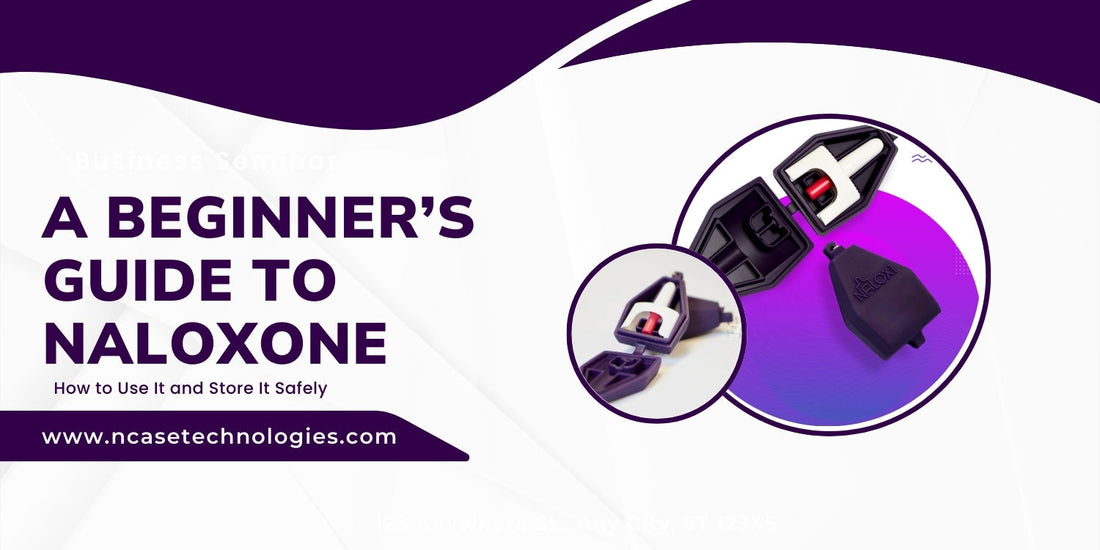
A Beginner’s Guide to Naloxone: How to Use It and Store It Safely
Share
The opioid epidemic has led to devastating losses worldwide, but one beacon of hope in this crisis is naloxone, a medication that can reverse the effects of an opioid overdose in moments. However, its effectiveness hinges on proper usage and storage. Understanding how to safely use and store naloxone is not just important for healthcare professionals but for anyone committed to harm reduction and saving lives.
Understanding Naloxone: What It Does and How It Works
Naloxone acts as an opioid antagonist, blocking opioid receptors in the brain. When administered during an overdose, it can reverse life-threatening symptoms like respiratory depression. Its rapid onset and high success rate make it invaluable in emergency situations.
Forms of Naloxone:
- Intranasal Spray: Easy to use and widely available, the intranasal spray (e.g., Narcan) is preferred for its simplicity.
- Injectable Naloxone: Typically administered by trained professionals, this form requires careful dosing and familiarity with injection techniques.
- Auto-Injectors: Designed for ease of use, these devices guide users through the process with audible instructions, making them ideal for non-medical responders.
Step-by-Step Guide to Using Naloxone
1. Recognizing an Overdose:
Look for these signs:
- Slow or stopped breathing
- Unconsciousness or inability to wake
- Blue or gray skin, especially on lips or fingertips
- Pinpoint pupils
If you suspect an overdose, act immediately. Time is critical.
2. Administering Naloxone:
- Intranasal Spray: Tilt the person’s head back and spray the medication into one nostril while ensuring the other nostril is clear.
- Injectable Naloxone: Draw the medication into a syringe and inject it into a large muscle, such as the thigh or upper arm.
- Auto-Injector: Follow the voice instructions, which typically direct you to press the device against the outer thigh.
3. After Administration:
- Call emergency services, even if the person regains consciousness.
- Monitor their breathing and responsiveness.
- Be prepared to administer a second dose if symptoms return, as naloxone’s effects may wear off before the opioids are fully metabolized.
Proper Storage of Naloxone
Naloxone is a robust medication, but improper storage can compromise its effectiveness. Here’s how to ensure it remains viable:
- Temperature Control:
- Store naloxone between 59°F and 77°F (15°C to 25°C). Avoid exposure to extreme heat or cold.
- If exposed to temperatures outside this range temporarily, it may still be usable, but potency could be reduced.
- Protect from Light and Moisture:
- Keep naloxone in its original packaging until use to shield it from UV light and humidity.
- Check Expiration Dates:
- Naloxone typically has a shelf life of 18-24 months. Replace expired doses promptly to ensure maximum efficacy.
- Invest in a Carry Case:
- A durable, insulated case can protect naloxone from physical damage and temperature fluctuations, making it easier to carry and store safely.
Making Naloxone Part of Daily Life
Carrying naloxone isn’t just for healthcare professionals—it’s a responsibility anyone can embrace. Overdose emergencies can happen anywhere, from public parks to private homes, and having naloxone readily available can make all the difference.
Tips for Incorporation:
- Attach it to a keychain or place it in a bag you use daily.
- Partner with local organizations to learn about naloxone training sessions.
-
Normalize conversations about overdose prevention to reduce stigma and raise awareness.
Conclusion
Naloxone’s life-saving potential is unparalleled, but only when people know how to use and store it correctly. By understanding its forms, mastering its application, and ensuring its proper storage, you can be ready to intervene effectively in critical moments.


